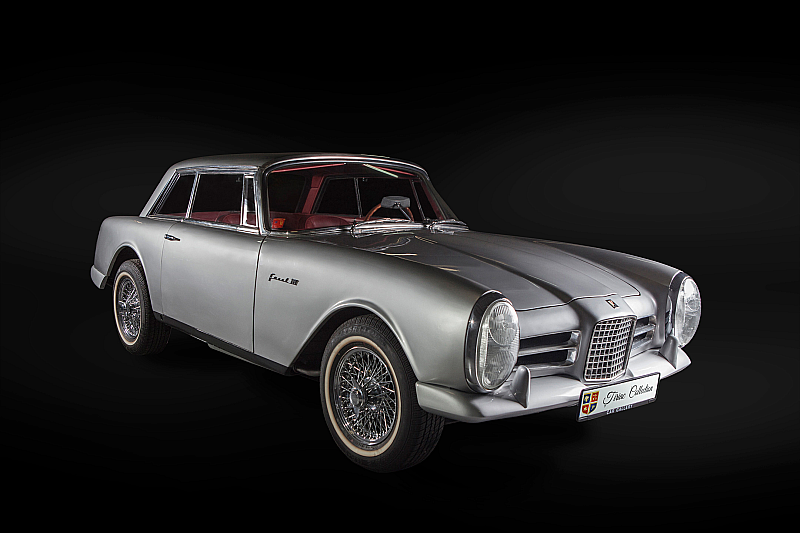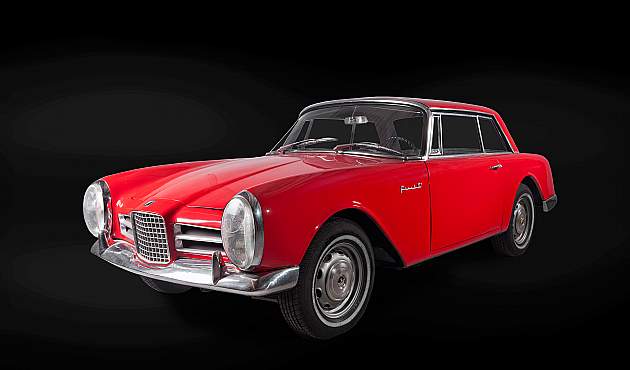Istorie
Over its history of 10 years, approximately 2,900 cars with the Facel Vega badge were produced. Out of those, only 625 Facel III units were to be produced between 1963 and 1964. Stirling Moss and Pablo Picasso counted themselves among the ranks of Facel Vega owners.
Full description
Facel S.A. was founded as a division of Bronzavia, a French aeronautics company. Facel produced various metal components, with 9,600 Jeep, 18,700 Simca and 220,000 Vespa bodies carrying Facel's parts over the course of its history. As well as many other metal parts for Ford and Renault.
Facel would probably still be making scooter and car parts to this day if it wasn’t for a resolute Frenchman named Jean Daninos. In 1954, he developed a luxury 2+2 coupe prototype and decided that the design could be done by the French, but the engine and gearbox could be bought from the Americans. And that’s how the first Facel 2+2 got a Chrysler V8. The completed prototype was unveiled in the summer of 1954 and was dubbed the ‘Vega built by Facel’. The car was met with a lot of interest, and the first production models were already in the hands of customers in the beginning of 1955. The brand was to be known officially as the Facel-Vega since 1956.
Abbreviated the "FV", the model was continually being improved. The Excellence, a four-door sedan, was introduced at the Paris Auto Show in 1956, and the HK500, which to this day is considered the culmination of the FV series, came out in 1958. The HK500 was very expensive, reserving it for the rich and famous who were happy to have an alternative from the other side of the Atlantic. Stirling Moss and Pablo Picasso counted themselves among the ranks of Facel Vega owners.
The Facel Vega Facel II, which was called one of the best-looking post-war cars around, was introduced in 1961. Its platform and many of its mechanical elements were taken from the HK500, and the 390-horsepower Chrysler engine made it possible to hit a top speed of almost 250 km/h.
Jean Daninos decided not to limit himself to luxurious and expensive models, but to develop small ones as well. Ones that could compete with the sporty Alfa Romeos, Porsches and Triumphs that were popular at the time. Thus, the Facellia – with a 4-cylinder, 1.6-litre, 115-horsepower engine assembled in France – was launched in September 1959. But the French-built engine was not reliable, the cars were being brought in for warranty repairs practically on a daily basis, and Facel Vega needed a quick fix. Having decided to stop investing in improvements on the old engine, the French went for what was reliable. They started putting a Volvo gearbox and the Volvo B18 engine from the P1800 model into the Facellia, And in order to avoid any association with unreliability, the car that came out in 1963 was called the Facel III, a name with a better history. The Facel 6 (six cylinder) was the last model built by the company, but it was only produced in 44 units between May and September 1964.
It was the warranty repairs that drove Facel Vega bankrupt. The French didn’t have much of a profit as it was, On October 31, 1964, the doors to the Facel Vega factory were closed. Over its history of 10 years, approximately 2,900 cars with the Facel Vega badge were produced. Out of those, only 625 (Coupes: 433, Roadsters: 192) Facel III units were to be produced between 1963 and 1964.
This particular one is painted in the original Torch Red. The car has covered 87,565 km.





